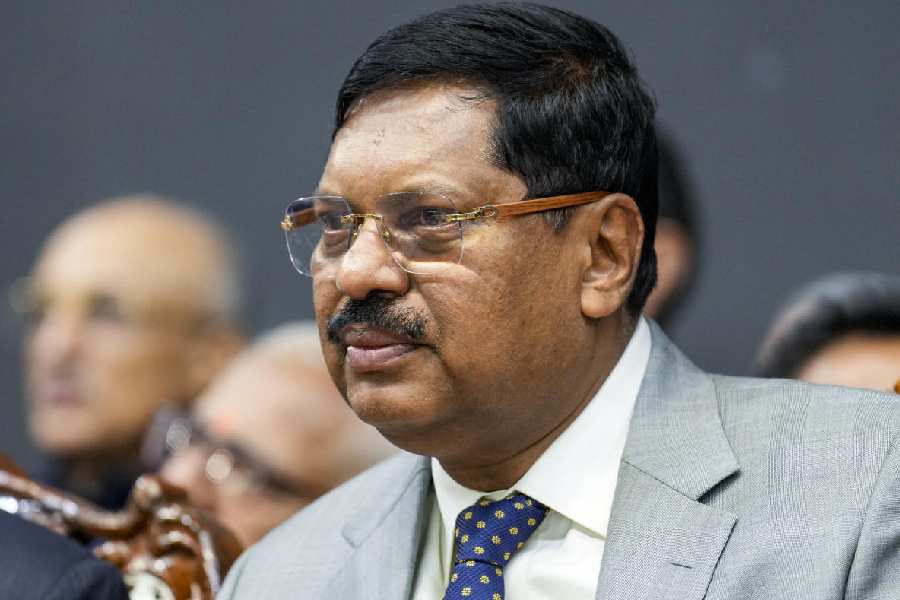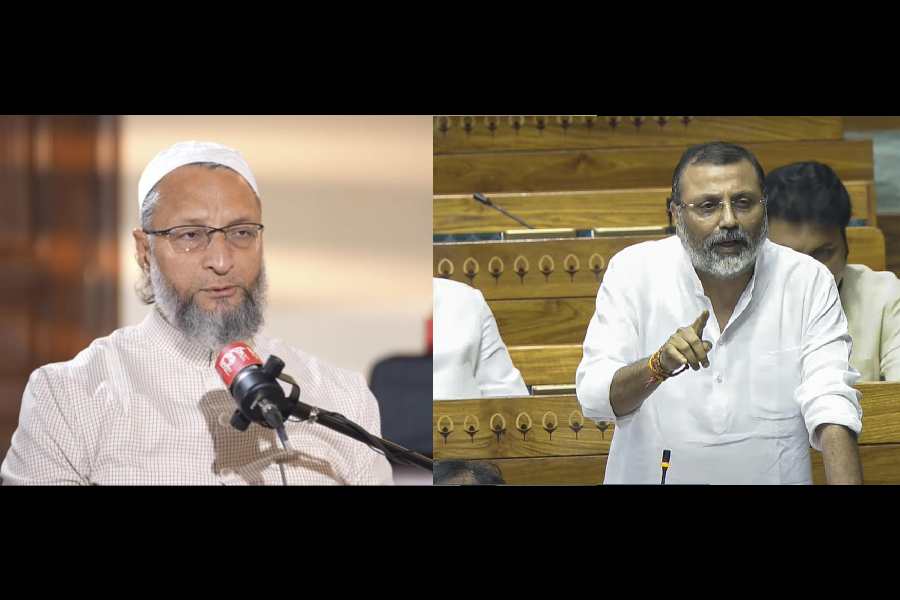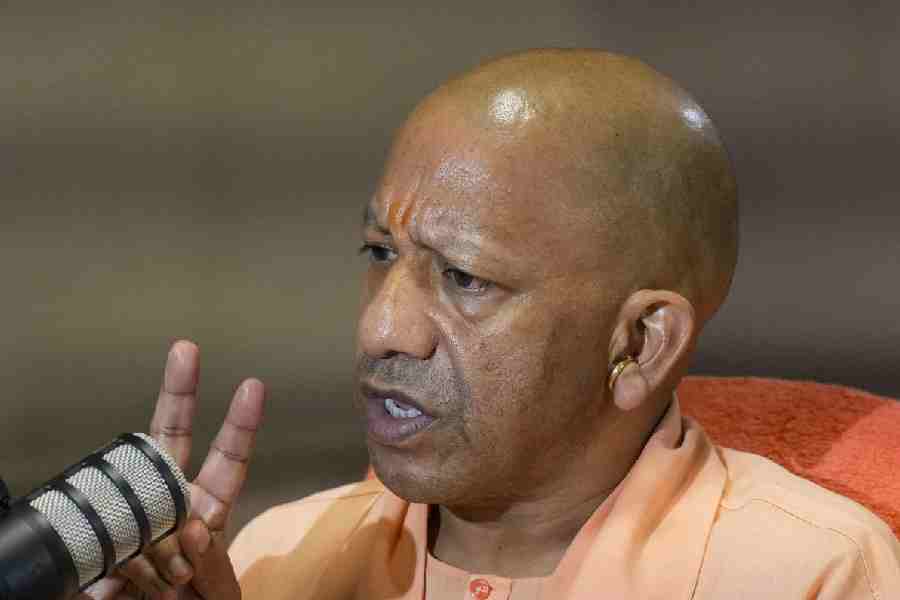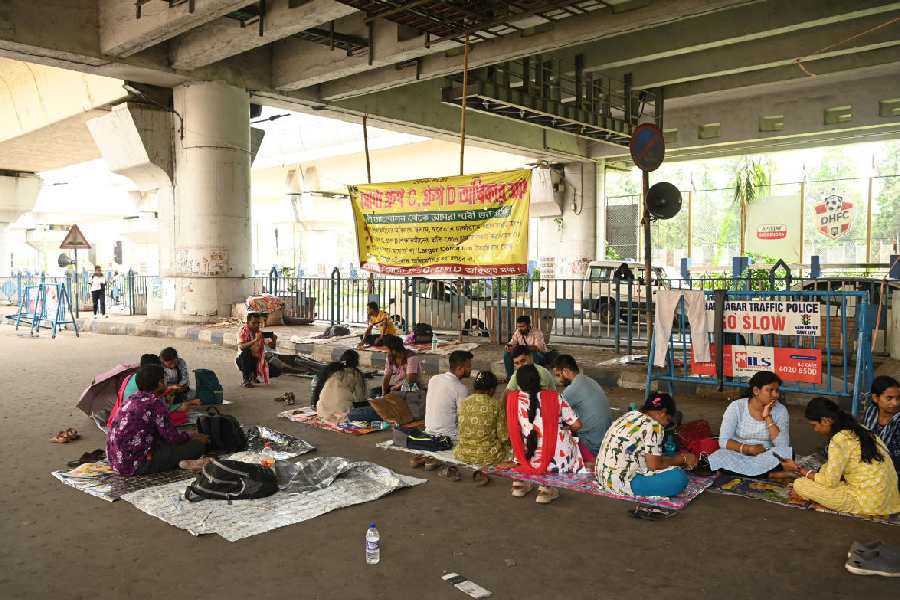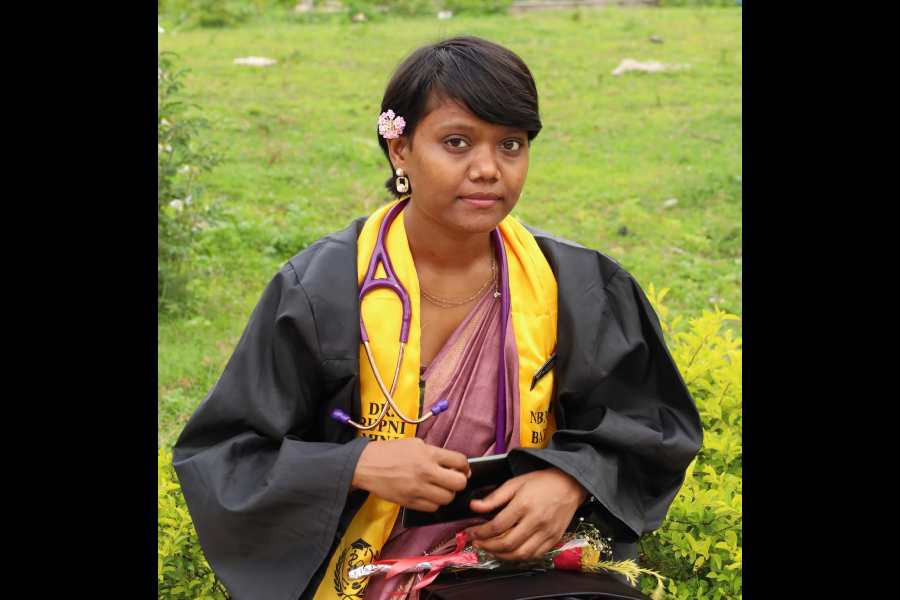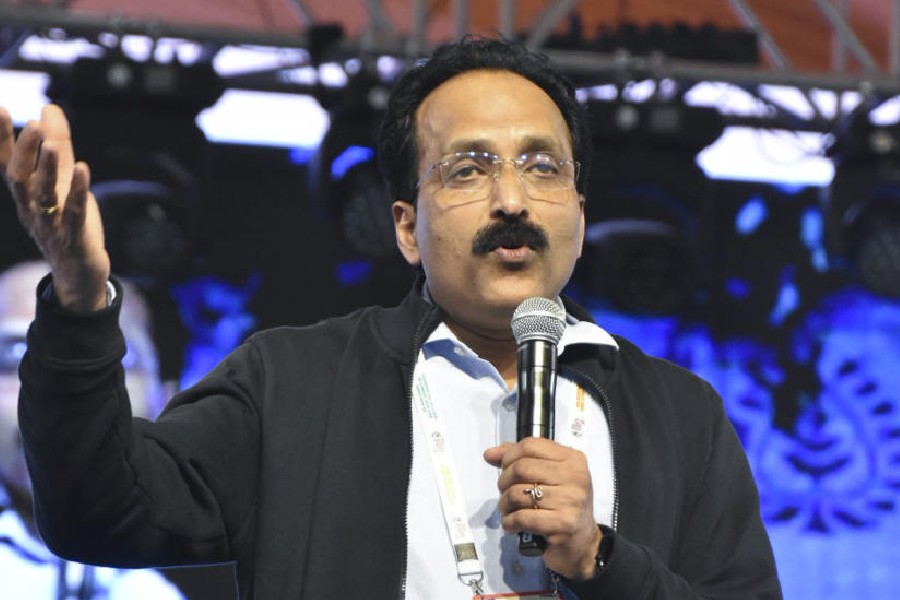 |
| Uparjan Bordoloi in Morigaon. Telegraph picture |
Uparjan Bordoloi, a resident of Morigaon Chapalongkuchi, finds it a tough job to keep his pot boiling since he married Jinu five years back.
The 36-year-old Tiwa cultivator lost whatever he had to the Kalang river; he still decided to marry, dreaming of an Indira Awaas Yojana house, some financial support under Kalpataru, a BPL ration card and work for 100 days a year under the Mahatma Gandhi National Rural Employment Guarantee Act.
Now after five years, Bordoloi has realised his dreams will never come true as except for a blanket he got nothing from the local panchayat.
His family has since grown to four members with his two children, but he remains without work.
“I am the youngest son. Instead of going to school I go to work in the fields with my father. He christened me in the hope that I will be the bread-earner for my family in his absence, but I am unable to earn money even for myself,” Bordoloi said.
“The other day, my wife participated in an election rally and got Rs 100. I purchased 5kg rice with that,” Bordoloi, one of the numerous victims of corruption in panchayati raj in Morigaon district, which is the biggest issue against the Congress not only in these parts, but elsewhere in the state as well, said.
His village along the inter-district border with Nagaon is under Kapili development block under Morigaon Assembly constituency.
A nexus of grassroots level political leaders and a section of dishonest officers engaged in Morigaon DRDA has allegedly turned the Mahatma Gandhi National Rural Employment Guarantee Act into a source of income for themselves.
“A lion’s share of the money sanctioned under the scheme is deposited in fake accounts. Sometimes, the entire money is drained out to fake accounts and the minimum work is done using professional labourers for cash payment,” Rafique Ahmed, a resident of Jaluguti, said.
Corruption in panchayati raj and other government departments, lack of development and pitiable communication are some of the main issues in this constituency.
Mainly upper class non-tribals and members of the Tiwa community dominate the constituency. Of the 1.49 lakh voters, more than 42,000 are from the Tiwa community. Religious and linguistic minority voters number around 34,000 and 7,000 respectively.
The AGP’s seat-sharing arrangement with the CPI had paved the way for Left leader Munin Mahanta twice — in 1991 and 1996. The Congress’s Jun Junali Borua has been representing the constituency since 2001. Dissidence in the AGP and the BJP and strong anti-incumbency factor against the sitting legislator have given hope to Mahanta.
Altogether seven candidates have submitted nomination from Morigaon this year. However, the contest will be a triangular one among the candidates of the three leading parties — the Congress, the AGP and the CPI.
“People’s love and faith in the Khirod Borua family had led us to back Jun Junali as the Congress candidate in 2001. However, her weak leadership and lack of control over a section of her corrupt followers has made her hands as dirty as those of Lady Macbeth,” a dissident Congress source said.
“Infiltration is the main issue in Morigaon. The Bangladeshi issue which is a threat to our population has brought me into politics,” BJP candidate Prahlad Bhuyan said.
“People have risen against the Congress misrule spontaneously. The voters in Morigaon will not give Borua the free hand to continue her corruption in the district which has set us back by 50 years,” Mahanta said.
However, Jun Junali Borua claims that voters would bring her to power again for her good work.
“My popularity is on the rise. The people of Morigaon have seen development only during our government,” she said.
“Here, the wheel of development runs anti-clockwise. This time her fortune will take the same route. Voters want me as the legislator. I am sure that I am in a better position,” AGP candidate Bireswar Medhi said.
Who’s right? Wait for the results on May 13.


